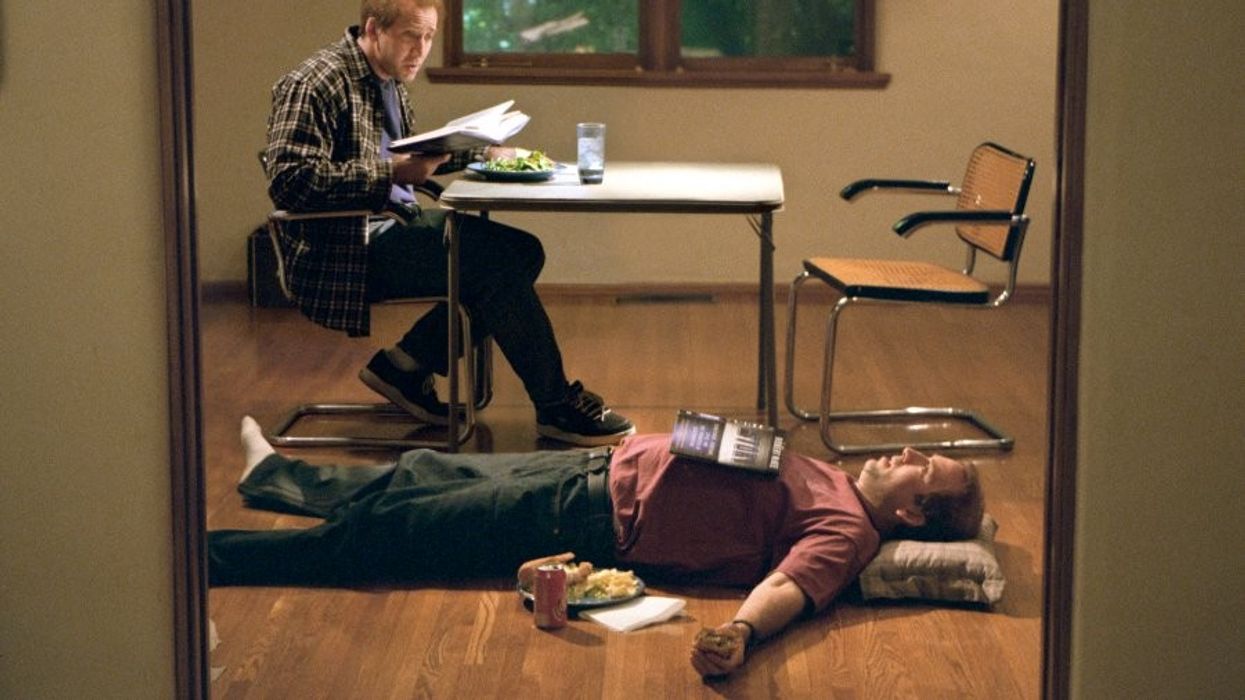The Screenwriter’s Anti-Manual: How to Break or Overcome Classic Story Hurdles
What good is knowing the rules if you aren’t willing to break them?

Screenwriting books are designed to help writers craft their stories within a structure that will connect with a reader. But what are the dangers of living and dying by the three-act structure? When does the scientific approach to screenwriting go too far? Screenwriter and director Felipe Braga (Trash, B1) answered these questions and more in an enlightening seminar at SXSW this week.
"I am not trying to bash screenwriting manuals," Braga said. "They provide outstanding analysis on how to write scripts. Script doctors are very intelligent people too, but what unites them is the promise that they will give us access not to formulas, but forms. And not access to rules, but principles. We have to see how the industry reacts to that."
According to Braga, these are the four most important screenwriting books:
- 1913: How to Write Movie Picture Plays by William Lewis Gordon
- 1979: Screenplay by Syd Field
- 1997: Story by Robert McKee
- 2007: The Anatomy of a Story: 22 Steps to Becoming a Master Storyteller by John Truby
Each book is connected to a transitional period in film history, Braga explained. Around the time of Gordon's book's publication, the pioneers of cinema — those who used the camera as if they were filming theater — were disappearing, and new filmmakers such as Cecil B. DeMille and Charlie Chaplin were appearing on the scene with a new language. The three-act structure was popularized by Syd Field's book, just after a revolutionary '70s movement of American cinema with films like The Godfather, Star Wars, and Annie Hall. Then, the '90s had Pulp Fiction and many other films that gave way to new narrative stylings; the concept of the inciting incident was popularized by McKee.

Below, Braga characterized three truisms that screenwriters face in their process. Then he offers his alternative take.
1. "If it doesn’t move the story move forward, just cut it."
Braga comes to the defense of screenwriters in the case of this familiar maxim. He cites the watch scene from Pulp Fiction as the antidote to this "rule": the supposedly superfluous 5-minute flashback explains how Bruce Willis’s dad has kept a watch in his butt for 5 years, and includes Christopher Walken's only appearance in the film. "Script doctors hate when a character only comes up once," explains Braga. "Producers hate it too, because it’s one more person to pay."
Braga argues scenes like this can have a very important narrative function: to qualify the drama. This is the kind of scene that script doctors will tell you to cut because it doesn’t help move the story forward — which, well, it doesn’t. According to Braga, it's a testament to Tarantino's text and Walken's performance that this scene is in the film at all.
Another example of a common cut is the monologue. “If you want to see a monologue you've written on screen, you have to direct the film," said Braga. "Even a half-page monologue — they're going to cut it. I have seen a lot of people become directors because they want to see their monologues on screen.”
2. The second-act problem
This is the screenwriter's third-world problem: After the first 35 pages, you feel that you have nothing left to give the story. According to Braga, this happens because writers get blocked by the very concept of the second-act itself.
"We take what we read in scriptwriting manuals so strictly that somehow when we reach that point we don't know how to create the conflict anymore," he explains, "because everything that seemed connected to a consequence is over."
Braga his own case of the "second-act problem" from a film he wrote, Trash, in a scene where a child is beaten by a policeman. He felt the scene would alienate the audience too much, so to "play against it" he brainstormed how that same scene would play in a different genre. After a couple hours of laughing at the most outrageous ideas, one idea stuck as a starting point for something original.
"John Truby is the only one who tells us the three-act theory is crap and makes no sense," said Braga. "By turning three acts into 22 steps, he’s trying to address the second-act problem."
3. Flat characters
When Braga needs help motivating his stories, he tends to divide his characters into two categories.
"The 'Cynical' is a character that knows something and help the protagonist reach something without looking like they are helping the protagonist because supposedly they are thinking about themselves," he said. "The 'Skeptic' is a character that makes a wonderful protagonist. A character always in doubt, in search of something they don’t know exactly how to get. They don’t accept what people are telling them, but they keep trying.”
He cites Hitchcock films written by John Michael Hayes as a pure example of this dichotomy. Braga notes the dialogue between James Stewart and Grace Kelly are always constructed this way: They never believe what the other is saying, and in a battle of positions, they somehow overcome their personal differences and seduce each other.
"That's drama," said Braga. "That idea of contradiction: Having a person of motivation and a protagonist with the need to break obstacles."
For more, see our complete coverage of the 2016 SXSW Film Festival. Listen to our podcasts from SXSW (or subscribe in iTunes):
No Film School's coverage of the 2016 SXSW Film Festival is sponsored by SongFreedom.

















